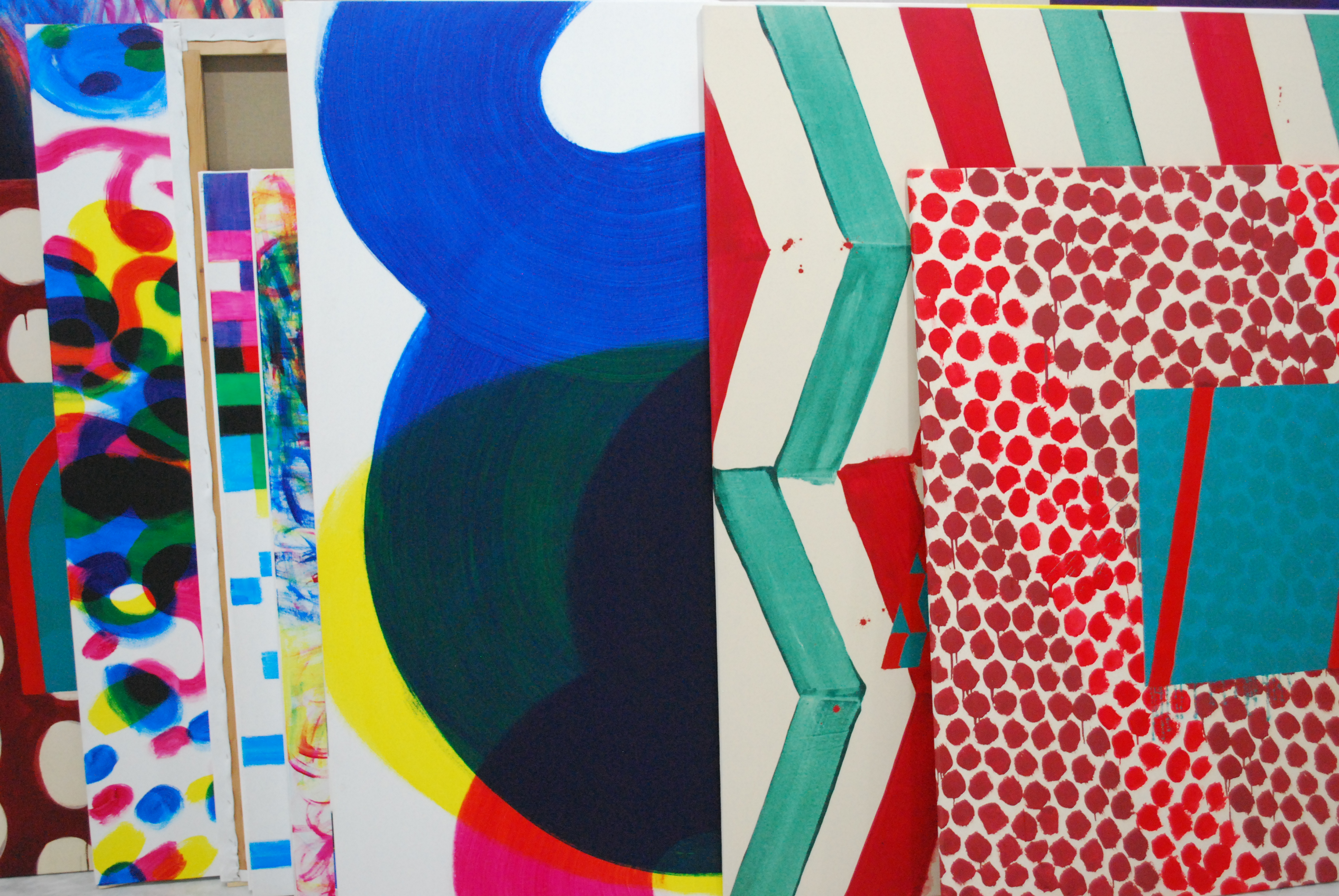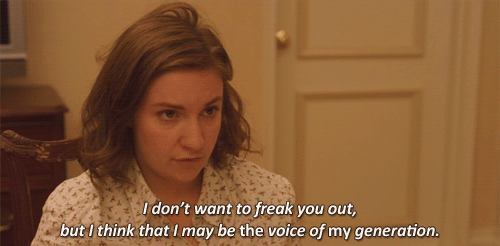Girls (white ones)
“I think I am the voice of a generation. Or at least a voice of a generation,” says Hannah Horvath, sitting across from her mum and dad whilst high on opium.
For this blog I would like to explore the idea of ‘quality TV’ being made intentionally for ‘quality audiences’ and what affect that has on the representation of cultures in the HBO series Girls.
‘Quality TV’ is difficult to define subjective nature of perceptions of qulaity. However, Jane Feuer believes “quality TV” as a descriptive term has some formulaic characteristics such as; being serialised, having moments of comedy paired with moments of high seriousness, explores otherwise taboo subject matter such as sex and drugs and is much alike art-house cinema, relying on the idea of the auteur, or in this case the writer-producer.
The HBO series Girls is the textbook definition of “quality TV”.
Girls is a HBO series written, produced and starring Lena Dunham. She also had a background in arthouse cinema with the success of her arthouse film Tiny Furniture. The show follows four, young, white, educated, upper-middle class females who try to find their way in living in the hipster capital of the world, Brooklyn. The 20 minute show explores themes such as abortion, education and drugs with moments of comedy littered throughout.
HBO has a history of positioning it’s brand away from broadcast TV and instead aligning themselves with arthouse cinema and developing a reputation for creating “quality TV” whilst insisting “It’s not TV. It’s HBO”. To add to the exclusivity of the product HBO has a cost.
Deborah Jaramillo (2002) believes that “the idea that subscribers can get products at HBO that they can get nowhere else has been a significant part of the channel’s allure”.
She goes on to explain that “television programs are both text and commodity. The television industry’s shift in 1970 to valuing upscale demographics over sheer ratings numbers is vital to the definition of “quality.” “Quality” programs are those that appeal to young, urban adults from 18 to 34 years of age”. (Jaramillo, 2002)
HBO makes quality TV intentionally for the idea of high net worth audiences. However the problem with this specific audience driven then a specific type of show gets made by the dominant culture leaving out characters and filmmakers that are marginalised.
Girls is quite progressive in terms of modern day feminism which is something that the show should be applauded for. The “voice of a generation line” Rolling Stone, in their piece entitled The Power of Lena Dunham responded in favour to the line, ‘the scary thing is, she’s probably right’. However the characters claim had adverse responses too, Shepherd (2014) claiming ‘Dunham managed to successfully exclude a large populace of said generation’.
Upon the shows debut in April, the much of the discussion surrounding the program, Girls was based around its blatant whiteness, Brooklyn, the most statistically diverse city in the country, the show had not just an all white cast.
I do believe that the show isn’t all bad and is actually quite progressive when read from a feminist lens. However, there is a need in the TV industry as a whole to be representative of a wider, more inclusive demographic. If this young, hipster, urban, white content is seen as quality and everything else is not then this cycle will continue and voices excluded from existing on not just HBO but TV in general.
Maureen Ryan (2014) argues that the lack of diversity on Girls, is not the wholly the fault of Dunham but is a reflection of a ‘massive failure on the part of the television industry’. She claims, ‘I could list the shows on television with all-white casts, but then we’d be here all day’. She recognises the importance of Girls representing ‘the expectations and dreams of a certain segment of the audience, some of whom want their reality reflected’ and credits the shows for ‘presenting a viewpoint that is not the norm on television’. (Ryan, 2014)
Therefore the issue is rooted in the lack of diversity in the industry and those that feel underrepresented in Lena Dunham’s Girls shouldn’t have to rely on her for representation.
Feuer, J. HBO and the Concept of Quality TV. In McCabe, J. and Akass, K. (2007). Quality TV. London: I.B. Tauris.
Jaramillo, D. (2002). The Family Racket: AOL Time Warner, HBO, The Sopranos, and the Construction of a Quality Brand. Journal of Communication Inquiry, 26(1), pp.59-75.
Ryan, M. (2014). ‘Girls’ Isn’t Racist, Television Is. [online] The Huffington Post. Available at: http://www.huffingtonpost.com/maureen-ryan/girls-hbo-racist_b_1451931.html [Accessed 3 Jun. 2014].
Sheffield, R. (2014). The Power of Lena Dunham’s ‘Girls’. [online] Rolling Stone. Available at: http://www.rollingstone.com/culture/blogs/pop-life/the-power-of-lena-dunhams-girls-20120413 [Accessed 3 Jun. 2014].
Sheperd, J. (2014). “Girls” still racist. [online] Available at: http://www.salon.com/2012/06/22/girls_still_racist_salpart/ [Accessed 3 Jun. 2014].

